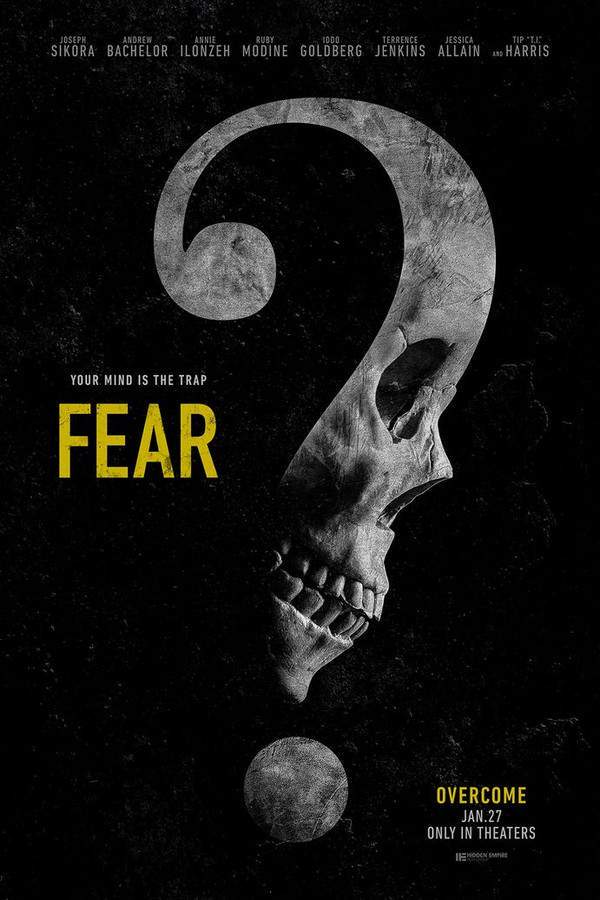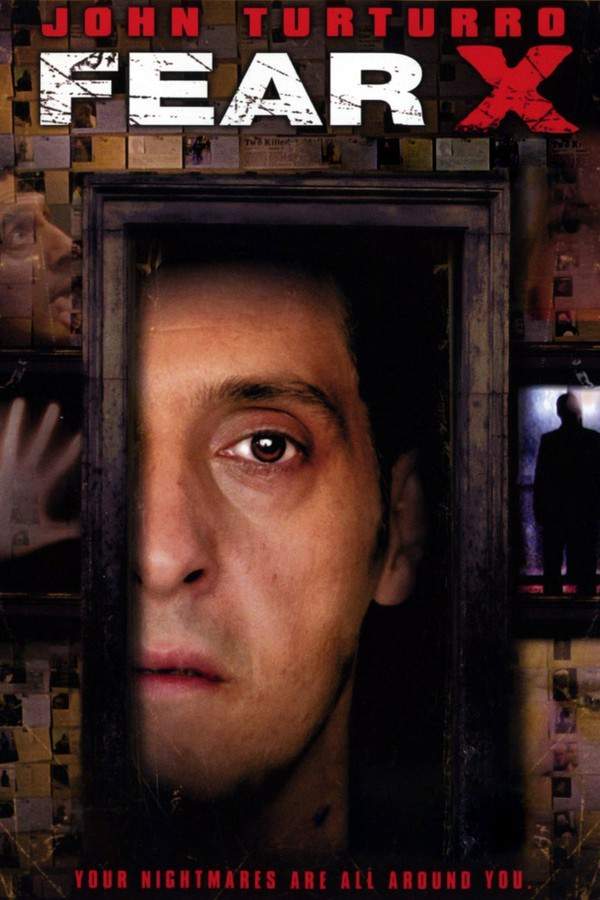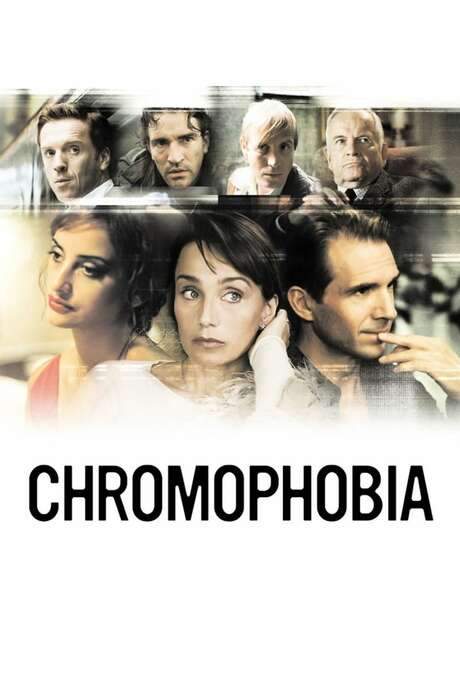Warning: spoilers below!
Haven’t seen A Problem with Fear yet? This summary contains major spoilers. Bookmark the page, watch the movie, and come back for the full breakdown. If you're ready, scroll on and relive the story!
A Problem with Fear (2003) – Full Plot Summary & Ending Explained
Read the complete plot breakdown of A Problem with Fear (2003), including all key story events, major twists, and the ending explained in detail. Discover what really happened—and what it all means.
Laurie Harding Paulo Costanzo is a small shop clerk in the local Calgary mall, living inside a world where everyday scenes of modern life are treated as potential disasters. The film opens with a wry, unsettling tone as a string of deadly incidents appears to orbit around his days—crosswalks, elevators, escalators, and nearly anything tied to consumer culture or technology become objects of fear and dark humor. An elevator suddenly plummets thirty stories, a woman’s scarf becomes tangled in an escalator and ends in tragedy, and a man is struck by a car right before Laurie’s premonition not to cross seems to foreshadow another catastrophe. These sequences are less about shock-value and more about how Laurie processes danger, weaving fear into the fabric of his ordinary routines.
Michelle Camille Sullivan Harding, Laurie’s sister, is not merely a bystander in his anxieties. She runs product development at Global Safety Inc., a company dedicated to countering the “Fear Storm” that grips the city. The firm promotes technologies like the Early Warning 2 Safe System—a PDA-like device that promises to alert users to danger ahead of time—and the Safe Bracelet that supposedly senses fear and allows people to beep for help. As Laurie’s gift for predicting danger grows stronger, Michelle’s professional ambitions push in a different direction—toward engineering safety into everyday life, even as the world around them grows increasingly unsettled.
Dot Emily Hampshire, Laurie’s girlfriend, becomes a counterpoint to his fear. She conducts a survey on “how the clothes you wear define you,” a project she both loathes and pursues with a curious zeal. Her presence in Laurie’s life grounds the story in a personal relationship while also highlighting the film’s satire of consumer culture: the way people seek meaning, status, and reassurance through brands, gadgets, and appearances, even as the city around them grows emptier and more ridiculous.
The movie is thick with absurd moments that sharpen its satirical edge. A mall announcer keeps requesting a speaker of a foreign language for reasons that never quite land, and the very same mall seems to fade into an almost empty, echoing space as the narrative unfolds. A classroom full of hiccups becomes a comical, surreal vignette that hints at a city out of balance. These episodes are not random glamor shots of chaos; they’re stylized slices that mirror Laurie’s inner life and the larger creep of fear into public spaces.
Throughout it all, the film leans into pop-cultural refrains and commercial jingles as emotional ballast for Laurie. He repeats familiar slogans to steady himself, like Rice-A-Roni, the San Francisco treat, a line that punctuates his attempts to anchor himself in familiarity even as the world spirals. Dot’s project and Michelle’s safety tech both illuminate a broader impulse in the story: the uneasy tension between protection and intrusion, between comforting safety and suffocating control.
The core premise follows Laurie’s ongoing effort to conquer his fears—an effort that seems to simultaneously consume him and extend outward to those around him. The more he predicts and experiences danger, the more his worldview hardens, while those closest to him try to mediate or reinterpret what fear means in a world where technology promises to anticipate danger before it happens. The result is a braided narrative about perception, paranoia, and the precarious line between preparation and panic.
As the film progresses, it raises questions about whether fear can truly be vanquished or if it merely mutates into new forms. The events, the devices, and the relationships all converge toward an ending that feels deliberately inconclusive. By the time the final scenes arrive, the audience is left with the sense that Laurie’s fears—though perhaps intensified or redirected—have not been neatly resolved, and that the city outside his apartment window remains a place where danger and comedy coexist in unsettling harmony.
In the end, the story offers a quiet meditation on how humans cope with uncertainty. It presents a world where safety technologies promise certainty, yet human connection—embodied in Michelle’s pragmatic drive, and Dot’s intimate, sometimes contradictory, ache for normalcy—remains the stubborn counterbalance to fear. The result is a thoughtful, offbeat exploration of how fear structures our lives and what it takes, genuinely, to live with it without surrendering to it.
Last Updated: October 09, 2025 at 16:52
Unlock the Full Story of A Problem with Fear
Don't stop at just watching — explore A Problem with Fear in full detail. From the complete plot summary and scene-by-scene timeline to character breakdowns, thematic analysis, and a deep dive into the ending — every page helps you truly understand what A Problem with Fear is all about. Plus, discover what's next after the movie.
A Problem with Fear Timeline
Track the full timeline of A Problem with Fear with every major event arranged chronologically. Perfect for decoding non-linear storytelling, flashbacks, or parallel narratives with a clear scene-by-scene breakdown.

Characters, Settings & Themes in A Problem with Fear
Discover the characters, locations, and core themes that shape A Problem with Fear. Get insights into symbolic elements, setting significance, and deeper narrative meaning — ideal for thematic analysis and movie breakdowns.

Similar Movies to A Problem with Fear
Discover movies like A Problem with Fear that share similar genres, themes, and storytelling elements. Whether you’re drawn to the atmosphere, character arcs, or plot structure, these curated recommendations will help you explore more films you’ll love.
Explore More About Movie A Problem with Fear
A Problem with Fear (2003) Scene-by-Scene Movie Timeline
A Problem with Fear (2003) Movie Characters, Themes & Settings
A Problem with Fear (2003) Spoiler-Free Summary & Key Flow
Movies Like A Problem with Fear – Similar Titles You’ll Enjoy
Fear (1996) Plot Summary & Ending Explained
Fear X (2005) Detailed Story Recap
Fear, Love, and Agoraphobia (2017) Full Movie Breakdown
Chromophobia (2005) Full Movie Breakdown
Naked Fear (2007) Complete Plot Breakdown
Geography of Fear (2000) Film Overview & Timeline
Phobia (1980) Movie Recap & Themes
Fear No Evil (1981) Full Summary & Key Details
Fear City (1984) Full Movie Breakdown
Scared to Death (1980) Detailed Story Recap
The Fear Inside (1992) Movie Recap & Themes
Fear City: A Family-Style Comedy (1994) Plot Summary & Ending Explained
River of Fear (2021) Movie Recap & Themes
Fear Me Not (2008) Movie Recap & Themes
Naked Fear (1999) Ending Explained & Film Insights


















